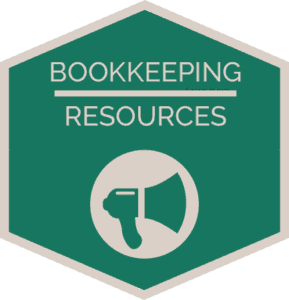Money collection sucks, so read on to learn how to get paid on time, every time (okay… maybe most of the time).
We’ve all been there: it’s been 30 days since you sent your client an invoice, and still no loot. Now you have to waste irreplaceable time emailing and making phone calls to try and get the money you’re owed. Well, guess what? It doesn’t have to be that way. With a little bit of work up front, you can get your invoices paid without pain.
 Step 1: Get on the Same Page
Step 1: Get on the Same Page
There’s a saying: Money Loves Clarity. The most important way to ensure that you and your client are crystal clear on the work you will be doing, and the amount of money you will be paid, is to have a contract. This may come from you or it may come from your client, but either way, you must have one.
At Good Cents Headquarters we focus quite a bit on what we call “client education.” The very first step of the client education process is having a friendly conversation to educate the client on the services we will be performing, how much we will be charging, when they can expect invoices, and how they can pay us (credit card, PayPal or ACH debit). We also ask who we should contract about payments and send invoices to.
Once you have this chat with your client, make sure the contract states all of the same things.
We recommend using a digital signature company like EchoSign and DocuSign to help expedite this process. A contract is worthless unless it is actually signed and executed by both parties—digital signature companies make this process easy peasy for both you and your client (and you want to be EASY to work with!).
Step 2: Get Organized
If you want to get paid on time, you need to invoice on time. When you start a project or gig, add reminders to your calendar for when you should be sending invoices and the due date for that payment. Send your clients friendly reminders before the money is due in case they aren’t as organized as you—add those reminders to your calendar, too.
Don’t wait until it’s time to invoice to set up the necessary paperwork, either. Fill out any W-9s, direct deposit forms, and anything else that affects your ability to get paid before you start the work, or at the very least, well in advance of your first invoicing date. Asking what information your client needs to expedite payment is part of that “client education” call we chatted about earlier. It’s up to you to ask these questions to ensure timely payment.
One of the most important lessons I ever learned in business is about what is called the “barrier to sale.” And what that means is you want to make it EASY for your customers to buy from you and PAY you. The easier you make it for clients to pay you, the more likely it is for you to get paid.
Consider accepting credit cards, debit cards and PayPal. Of course there are fees associated with accepting different forms of payment, but you often pay for things in life with either money or time. A few dollars to accept a rapid payment may save you hours of follow up.
Using software tools like QuickBooks Online—which connects with Intuit Merchant Services—can help you streamline the entire process: from invoicing to sending reminders, and collecting payments. And the less time you and your clients have to spend on dealing with payment issues, the better for your business relationship.
Step 3: Get That Money
Hopefully, all that work you did in steps 1 and 2 will ensure that you get your money when it’s due. But let’s be honest—that won’t always happen. When contacting clients about overdue invoices, you’ll catch a lot more flies with honey than vinegar. Being nice and sweet—“I’m just sending a friendly reminder that payment for invoice #001 was due yesterday!—often goes a long way toward getting paid.
But sometimes you’ll get a bum client, and all the friendly reminders in the world aren’t going to put that money in your bank account. Maybe the client is having financial trouble and can’t afford to pay. In that case, you have a few options.
If the client is actually returning your emails and phone calls, see if you can work out a payment plan. This will ensure that you’ll eventually be paid SOMETHING. If the client has ghosted you, a collection agency or lawsuit may be a last resort—but know that the amount of money you’ll have to pay to see it through might be more than what you’re owed.
As a business owner, the reality is that you may not be able to collect 100% of money due to you—as a general rule I recommend that most of my service-based clients ask for a deposit that will at least cover their costs, and write benchmark payments into the contract so that as more work is performed, you limit your risk of not being paid at all. If you find yourself in the sucky position of not being paid, sometimes it’s worth pursuing, but sometimes, it’s better to chalk it up to the cost of doing business. Most clients will pay you, and mostly on time, if you have good communication and easy payment methods. This will help to keep your accounting—and your business relationships—running smoothly.

